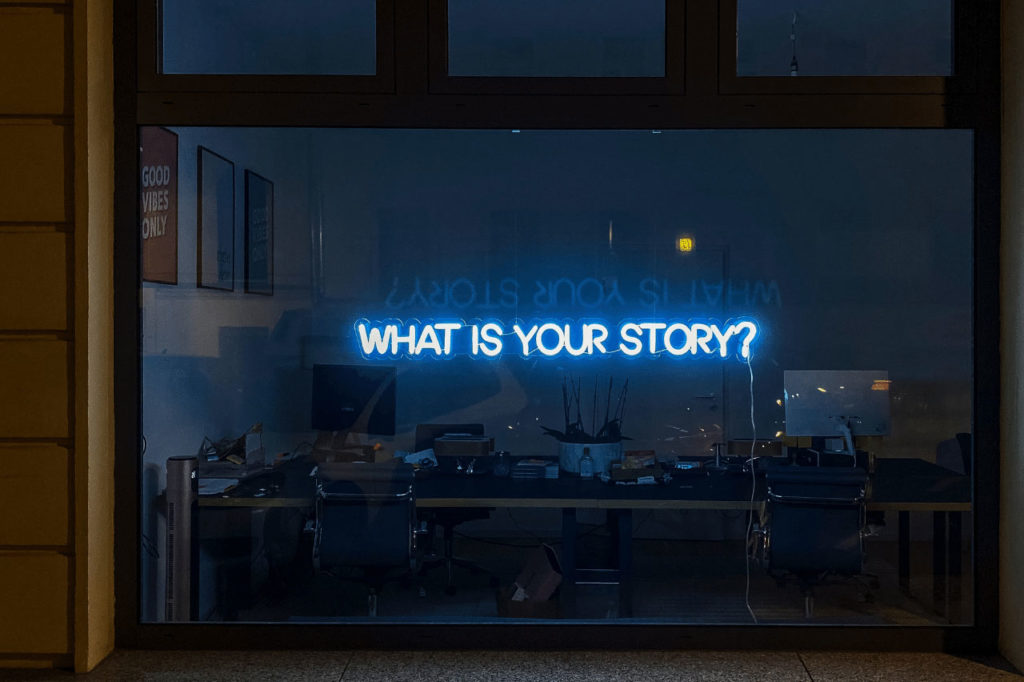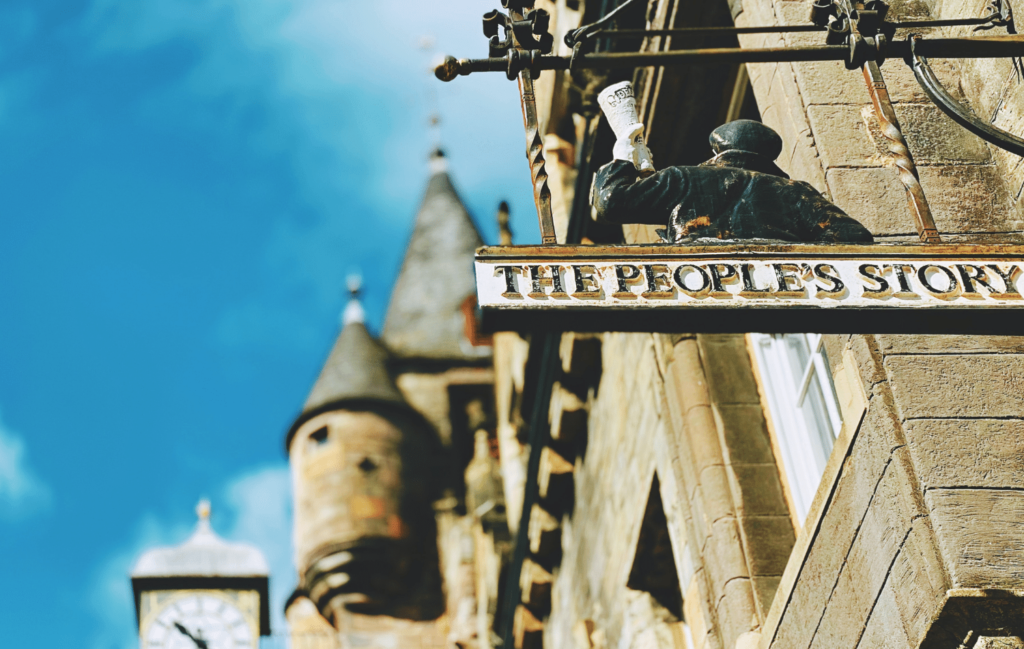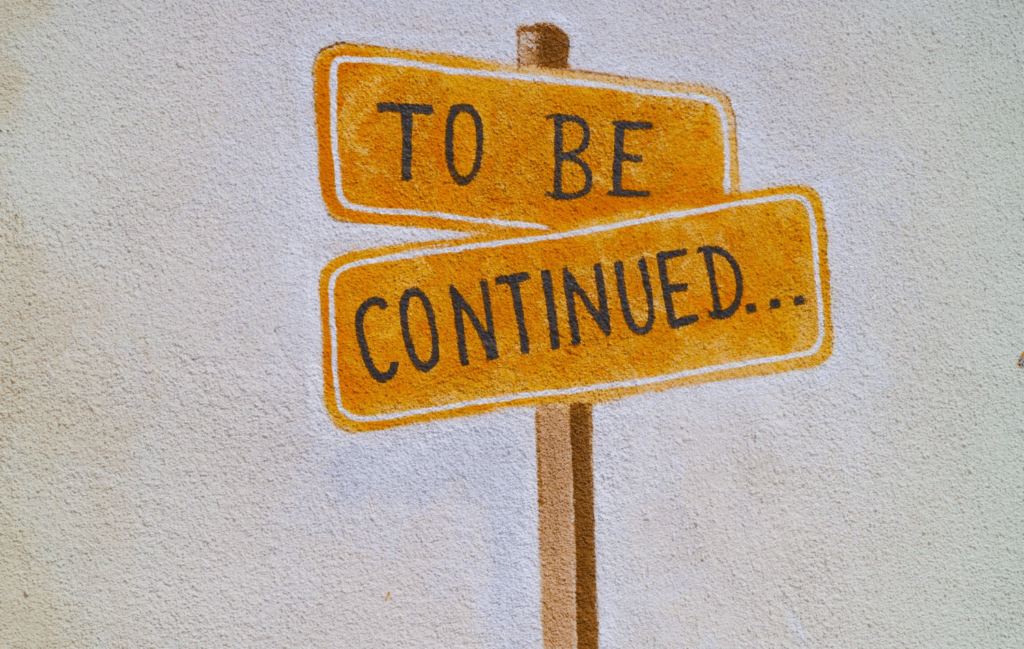
Can you think of a brand you absolutely love? For me, Innocent immediately comes to mind. Even though they’re now a mature brand with a well-established presence, I still find myself talking about them, celebrating their marketing wins and investing myself into their mission like I have personal shares in the company. They’ve become a benchmark for their use of tone of voice and a byword for a certain type of copywriting.
But the main reason I keep holding them up as a great example of branding and marketing is that Innocent sold me a story. In fact, when you look at Innocent’s product range, there’s not much about it that’s unique or groundbreaking anymore. They’re not organic. They’re not fermented. They’re not locally sourced. The flavours are quite pedestrian compared to the other newer brands. But their story and their voice still endure.
Brands build their loyal fan base by telling their customers captivating stories. Stories that people identify with at an essential level. Stories that evoke entertainment and laughter. Stories that people share with their friends, that make them feel heroic.
These stories aren’t stumbled upon or thrown together. They are created, then nurtured, cultivated and honed. And it’s a process that can work for any company, regardless of your size, reach or sector. Brand storytelling is an integral part of making an everlasting mark in your industry – and even science agrees.
HubSpot says: “The human brain is wired to respond to a well-crafted narrative – neuroscience proves that storytelling is the best way to capture people’s attention, bake information into their memories, and forge close, personal bonds. Your audience is programmed to crave and seek out great stories – that’ll never change.”
Brand storytelling is now more important than ever. More consumers are shopping with their ethical and social ideals at the forefront of their buying decisions as they seek brands that speak to their values. According to Forbes, changes in consumer trends this year see an Increased demand for brand transparency and a greater want for a human element during brand interactions.
So how do you write your own brand story? Keep reading for our advice and top tips. But first, let’s go over the basics:
What is a brand story?
We like this definition from Echo Stories: “A brand story is a cohesive narrative that encompasses the facts and feelings that are created by your brand. Unlike traditional advertising, a story must inspire an emotional reaction. Things that can influence your brand include your product, price, history, quality, marketing, in-store experience, purpose, values, location and–most crucially–what other people say about you.”
HubSpot also has an excellent way of summing this up: “A brand story recounts the series of events that sparked your company’s inception and expresses how that narrative still drives your mission today. Just like your favourite books and movies’ characters, if you can craft a compelling brand story, your audience will remember who you are, develop empathy for you, and, ultimately, care about you.”
Although brand storytelling has been around for a long time, the rise of social media over recent years has prompted an increase in discussions around brands and their missions. Platforms such as Twitter allow brands to sit in a 24/7 conversation with their consumers as they share their experiences, good or bad, online.
Whilst you can’t always control the whole narrative surrounding your brand, by inserting your compelling story into the mix, you can focus it. Let your voice clarify your mission, drive emotion and authenticate your values.
Let’s start writing.

Why does your brand exist?
First of all, think: Why does your brand exist?
Some people may say ‘to make money’, but this reason is short-sighted and won’t guarantee custom. Really think about the reason behind your brand or business – this should be the foundation of your brand storytelling and the prompt to tell more.
Here is a great example from the brand TOMS, which use their story as a bedrock for their existence. The tagline, “One for one,” means that for every purchased pair, TOMS gives a pair of shoes to someone in need. TOMS exists to support and improve lives.
Think about your social, environmental and ethical missions; consider the impact you want your brand or business to make. Type out or write down a few bullet points and use this as your starting point.
What does a brand story need?

What elements create a compelling brand story? Here are five I think you should consider:
Personality
Neil Patel explains this well: “Brand stories are not marketing materials. They are not ads, and they are not sales pitches. Brand stories should be told with the brand persona and the writer’s personality on the centre stage. Boring stories won’t attract and retain readers, but stories brimming with personality can.”
Your brand story doesn’t exist to perpetually place your brand on some sort of pedestal. Instead, it is inspired by the presence of people who participate, create, connect, and develop the saga of growth and success, says Patel.
Personality and your brand’s persona will propel your story and give it a human touch. People trust other people. By adopting a personality-driven approach, you can guarantee your customers will place their trust in your brand and mission.
Supporting data
Data is great for backing up your claims with hard-earned evidence, but you should avoid bombarding your customers with an overkill of facts and figures. Data is, however, a valuable tool that, when used effectively, can make a significant impact. Tell your audience the ‘why’ and back it up with a few numbers; think of it as a support role in the standing ovation-worthy performance that will be your brand story.
Customer connection
Your brand story is written with the intention that your customers will connect with it in some way. Perhaps it will align with their own social or environmental values. It might entertain to the point they want to see more. Or maybe it will make them feel heroic and proud for supporting your mission or good cause.

In all, your story isn’t about your brand. Yes, it is written by your brand, but the story is written with the customer at its core. You want your story to be written in a way that communicates relatability and likeness. You don’t want to appear superhuman or unattainable.
Shareability
A good story will be shared by your customers. Think about the sort of thing you share on social media or pass along to your colleagues at work. If your story is evoking some kind of emotion, the chances are it will be shared more frequently.
But sometimes, a little push is needed to encourage your customers to share your brand story. There are a few ways you can do this:
- Think about your personal brand and grow your reach by staying active on social media. Your personal brand storytelling is an excellent way of infusing personality into your content marketing.
- Apply elements of your story to all aspects of your marketing activity. Whether you are writing a guest blog or just tweeting about an upcoming launch, ensure you convey the same tone and your mission throughout.
- Encourage your customers to help tell your story through reviews and testimonials. As we mentioned before, people trust people, and your reviews section will be the first place most people look. And if you’re providing an excellent service, your customers will love to shout about it.
Simplicity
Simple stories are better. Whilst some of us may love the twists and turns of a thrilling plot, you want to adopt a less complex model when it comes to your brand story. Simplicity will ensure your story is accessible and easily digestible too. This brings us to your story structure.

Structuring your story
Just like any good plot, your brand story will need a beginning, middle and end. You’ll want to set the scene, pinpoint the conflict, and ultimately find or suggest a resolution. Finally, at their core, stories are about overcoming adversity, HubSpot says. If there isn’t an emotional journey that we, as customers, can relate to or invest in, you will lose attention fast.
Avoid the misconception that you need to have a perfect, mistake-free experience since the birth of your business. Nobody relates to perfect. Painting a picture that says it is all ‘sunsets and rose’ isn’t your way to go. Life has its ups and downs, its flaws and troubles – much like most businesses. Don’t be afraid to share that authentically within your brand story.
However, like every other story, with conflict comes the resolution. The resolution will describe how your brand has solved the problem and found a solution – this will be the moment you get your emotional payoff. But remember – you don’t want your story to end with a happy ending that is as predictable as the next. Leave your customers wanting to embark on the next chapter with you.

Here are a few examples of our favourite brand stories:
How can we help?
A brand story helps to build deep, long-lasting and valuable relationships with consumers. It also helps protect and nurture brands now at the mercy of consumer-generated content and interactions.
Our brand storytelling service identifies and communicates a distinct identity to your customers. At a practical level, it can increase your customer share, boost your bottom line and secure the long-term development of your business.
Find out more about our brand story service. Fill in our contact form or give us a call on 01803 865025 to find out more.
